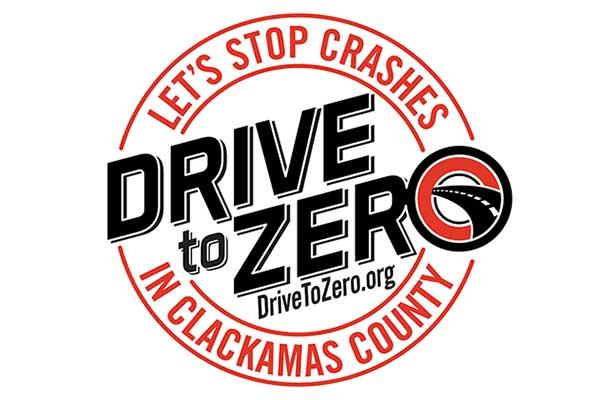Top 3 causes of crashes
Aggressive driving
Aggressive driving is defined by the U.S. Department of Transportation as “driving actions that markedly exceed the norms of safe driving behavior and directly affect other road users by placing them in unnecessary danger.” This includes driving too fast for conditions, following too closely and driving in excess of posted speed.
Approximately 47% of all fatal and serious injury crashes — and more than 57% of all crashes — on roads in Clackamas County are at least partially attributable to aggressive driving.
- The chances of dying or being seriously injured in a traffic crash doubles for every 10mph over 50mph — this equates to 400%.
- The stopping distance for a passenger car on dry asphalt increases from 229 feet at 50mph to 387 feet at 70mph — a 69% increase in stopping distance.
- 4 out of 10 people who die in speed related crashes are innocent victims.
What we are doing about it
The county does its best to keep roads safe by trimming back vegetation near the roads, keeping water off the roads, establishing appropriate speed limits, and coordinating and timing traffic signals, but we can’t do it alone.
What you can do about it
- Drive carefully, give the drivers near you a break by slowing down - and encourage your friends, family and co-workers to do the same.
- Support our safety efforts through increased funding.
Young drivers (ages 15–25)
Drivers age 15–25 are a vulnerable motorist group because of limited experience handling the tasks of operating a vehicle and applying newly acquired driving skills, especially with the number of in-vehicle distractions (e.g., radio, GPS, cell phones, passengers).
This age group is involved in more than 40% of all fatal and serious injury crashes on roads in Clackamas County.
What we are doing about it
In the county, we do our best to keep our roads safe by maintaining signs and striping to guide young drivers, but we can’t do it alone.
What you can do about it
- If you’re a parent, make sure your children take driver education courses. ODOT Why Drive with Ed
- Make safe driving a top priority for your children. As new drivers, they are safest during the parent-supervised learning period and least safe the first six months they are driving on their own.
- Drive carefully — not impaired — encourage young drivers, and friends, family and co-workers to the do the same.
- Support our safety efforts through increased funding to maintain roads.
Roadway departure
Roadway departure crashes are defined as non-intersection crashes that occur after a vehicle crosses an edge line or a center line, or otherwise leaves the travel way. These crashes include single vehicle, non-pedestrian and non-bicycle crashes, head-on and sideswipe crashes where vehicles are traveling in the opposite direction, and crashes involving a fixed object and only one vehicle.
Over 40% of crashes in the county involve lane departure crashes and primarily take place on rural roads.
What we are doing about it
We do our best to keep our roads safe by maintaining shoulders, fixing abrupt pavement edges, installing signs and chevrons warning people of upcoming curves, turns and intersections, and providing edge lines and centerline markings and using high-friction surface treatments.
What you can do about it
- Drive carefully, not impaired and encourage your friends, family, and co-workers to the do the same.
- Support our safety efforts through increased funding.
Distracted driving
Distracted driving is any activity that takes a driver’s attention away from the primary task of driving. Here the top distractions drivers face and ways you can avoid them.
There are three main types of distractions while driving:



Driver distraction is related to 80% of crashes, and the #1 source of inattention is cell phones! Cell phone use is the most dangerous distracted driving because it involves all three of these types of distractions.
Using a cell phone use while driving, whether it's hand-held or hands-free, delays a driver's reactions as much as having a blood alcohol concentration of .08% (the equivalent of about four beers). That means you shouldn't even be thinking about your cellphone when driving if you'd like to prevent an accident.
Try these tips to help avoid cellphone use while driving:
- Know your route before you go — that way you won't need to look at your cellphone for maps.
- Leave your phone in the back seat to avoid being tempted to text or check apps.
- Keep in mind that you can always text or call when you get to your destination.
- If you have a really urgent matter, carefully find a safe place to pull over and stop your car before you use your phone.
Other distracting activities include:
- eating and drinking
- talking to passengers
- grooming
- reading, including maps
- using a navigation system
- watching a video
- adjusting a radio, CD player or MP3 player
 Translate
Translate






